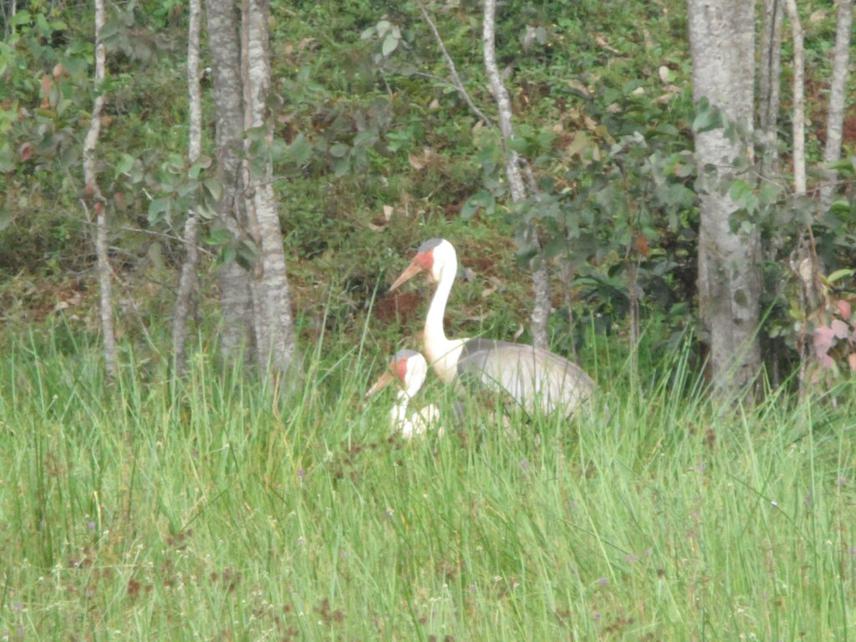Abebayehu Aticho
Other projects
10 Sep 2015
Improving Wattled Crane (Bugeranus carunculatus) Population through Community Based Conservation in Boye Wetland Complex, Jimma, Southwest Ethiopia
15 Nov 2016
Strengthening Community Capacity to Undertake Wattled Crane and its Habitat Conservation in Boye Wetland Complex, Jimma, Ethiopia
25 Jun 2019
Building Community Capacity for Wetland and River Buffer Zone Management to Ensure Sustainable Wattled Crane Survival and Socio-Ecological Benefits, Jimma Zone, Ethiopia
27 Oct 2021
Fostering Community-Based Wetland Management to Enrich Threatened Crane Species Conservation and Community Livelihood in Jimma, Ethiopia
This project is intended to contribute for the improvement of Wattled Crane population and its habitat conditions in Ethiopia through advancing conservation the understanding and participation of local community in the project activities, and scaling-up promising conservation practices to other breeding areas.

Wattled Cranes (WCs) are listed as a vulnerable species in IUCN red list. It is an endemic species to Africa and specialized to wetland habitats (Meine and Archibald 1996). The main populations of this species is exists in 11 African countries; Ethiopia, Tanzania, Democratic Republic of Congo, Zambia, Angola, Malawi, Mozambique, Zimbabwe, Botswana, Namibia, and South Africa. The species is declining rapid in most of the range countries (Beilfuss et al. 2007). The causes of population decline are loss and degradation of wetlands as a result of upstream river regulation, intensified agriculture, mining, drainage, and invasive species. Other threats include nest disturbance and destruction, grass-burning regimes, poisoning, collision with utility lines, direct consumption of chicks, persecution, traditional medicine, increasing livestock farming, wars, desertification, and agrochemicals.
In Ethiopia, about 50% of the population reduction is reported during the past decades mainly due to wetland habitat degradation and loss, nest disturbance and destruction, poor breeding conditions, and lack of local community participation in conservation. Thus, to save the species and its habitats from further losses conservation efforts are initiated in 2015 and accomplished basic conservation activities in Jimma area. The current project is designed to address problems identified during the preceding project period (RSG-II) and scale-up the promising conservation practices to contribute for the improvement of WC population as well as its habitat conditions. Accordingly, the project will intend to realize the following objectives:
• to increase breeding success of WC through scaling-up of capable conservation practices,
• to improve school children (students) engagement in ecological (water bird, and wetland) and conservation exercises,
• to assess perception and attitude of local community on WC and its habitat (mainly, wetland)